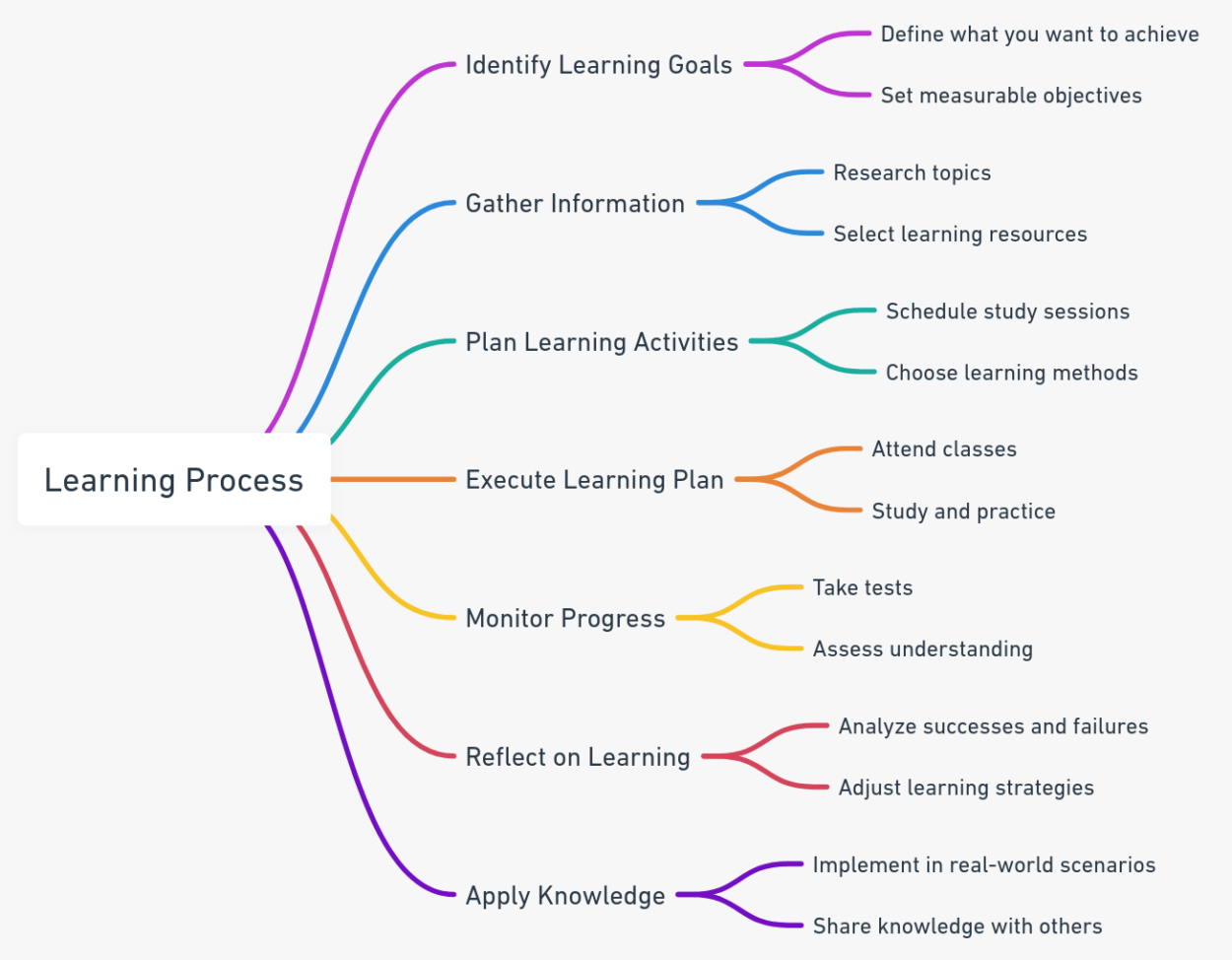
The Ultimate Guide to the Learning Process

Learning effectively is a skill that benefits everyone—from students to professionals. However, mastering the learning process can be challenging without a clear and structured approach. This guide will walk you through each step of the learning process, from setting goals to applying knowledge, ensuring you make the most of your educational endeavors.
Step 1: Identifying Your Learning Goals
The journey to knowledge begins with a destination in mind. Defining what you want to achieve and setting measurable objectives gives you a clear direction. Whether you’re aiming to master a new language or understand quantum physics, your goals should be SMART: Specific, Measurable, Achievable, Relevant, and Time-bound. This clarity will fuel your motivation and provide a yardstick for progress.
Step 2: Gathering Information
With goals in place, the next step is to gather the information you need. This means researching topics thoroughly and selecting learning resources that align with your objectives. Look for books, scholarly articles, online courses, and other educational materials that are credible and relevant. Remember, the quality of information you consume directly impacts your understanding.
Step 3: Planning Your Learning Activities
A well-thought-out plan is your roadmap to success. Schedule regular study sessions and break your learning into manageable chunks. Choose learning methods that suit your style, whether it’s visual aids, auditory resources, or hands-on practice. Consistency and variety in your learning activities will keep you engaged and help reinforce your knowledge.
Step 4: Executing Your Learning Plan
Now, put your plan into action. Attend classes, participate in discussions, and complete your study sessions as scheduled. Regular study and practice not only reinforce memory but also enhance understanding. Don’t shy away from challenging topics—perseverance is key to conquering complex material.
Step 5: Monitoring Your Progress
It’s essential to track your learning progress. Take tests, use flashcards, or practice skills to assess your understanding. This self-evaluation will help you identify areas where you need more focus and adjust your learning plan accordingly.
Step 6: Reflecting on Your Learning
Reflection is a powerful tool in the learning process. Analyze your successes and failures to understand what works and what doesn’t. Reflecting on your experiences will help you adapt and refine your learning strategies, making your study time more effective.
Step 7: Applying Your Knowledge
The ultimate test of learning is application. Implement what you’ve learned in real-world scenarios. This not only cements your knowledge but also allows you to discover practical uses for it. Sharing your knowledge with others can reinforce what you’ve learned and help you gain new perspectives.
Conclusion
The learning process is a dynamic and ongoing journey. By following these steps, you can develop a robust framework for acquiring and applying new knowledge. Remember, learning is not just about memorization—it’s about understanding, application, and growth.
Engage with Us:
Have you tried any of these strategies? Share your experiences in the comments below or on social media with our tags. For more tips on effective learning, sign up for our newsletter and join a community of lifelong learners.